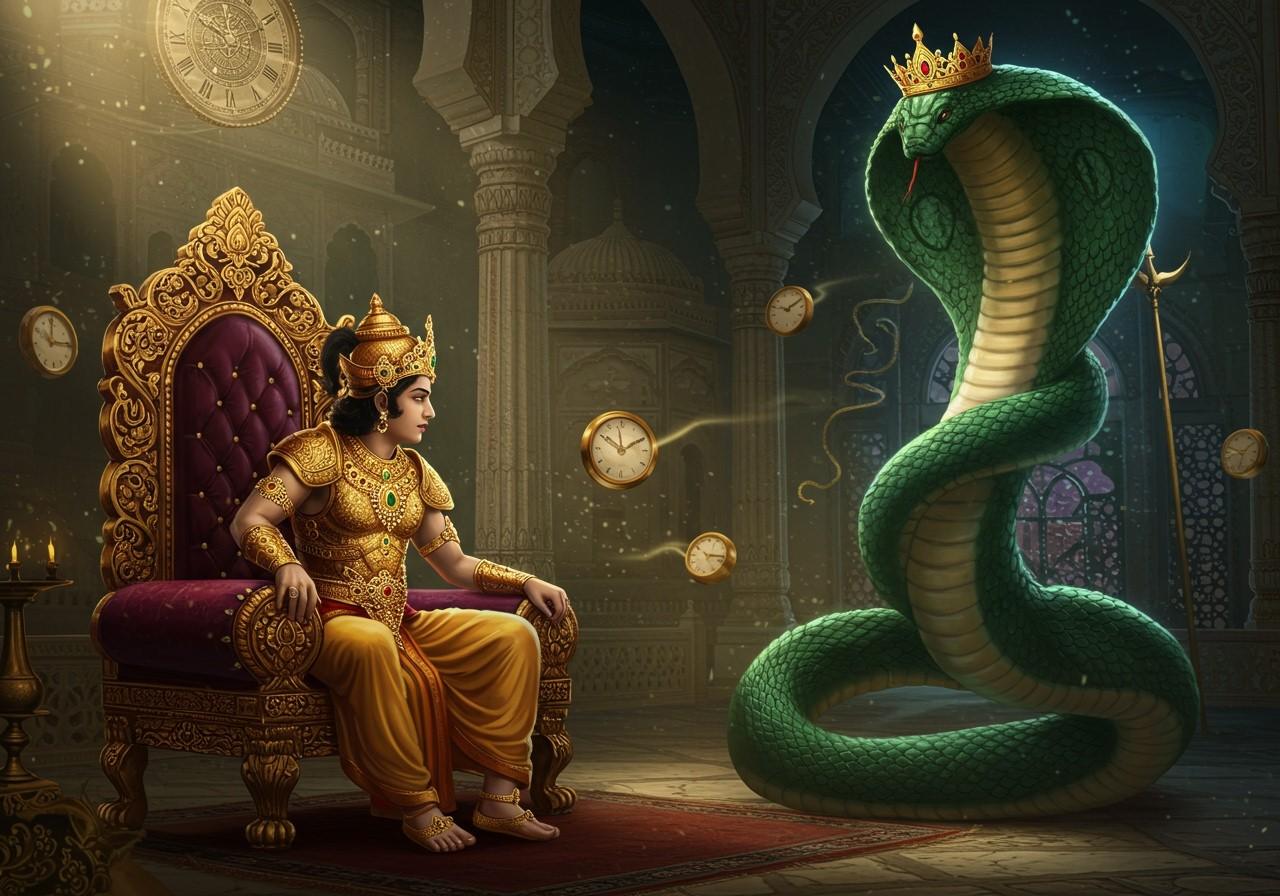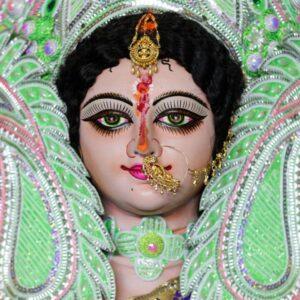
The Mahabharata, a cornerstone of Indian culture and wisdom, is filled with captivating narratives. Among these, the story of Parikshit and Takshak stands out, offering profound insights into the concepts of fate, destiny, karma, dharma, and divine intervention. This tale resonates deeply with those who cherish tradition and seek wisdom in ancient lore.
Parikshit: The Kuru King
Parikshit, grandson of Arjuna and son of Abhimanyu, was born into a lineage of legendary warriors. As the king of Hastinapura, he faced numerous trials and tribulations. Yet, his commitment to upholding dharma remained unwavering. Parikshit’s leadership was evident in his defense against invading forces and his continuous endeavors to maintain peace and prosperity within his kingdom. He was known for his courage and dedication to his people.
Takshak: The Serpent King
Takshak, the formidable serpent king, holds a significant position in Hindu mythology and the Mahabharata. His enmity with Parikshit is well-known, and his character embodies cunning, power, and a deep understanding of the mystical world. Takshak’s interactions with other figures in the epic highlight his influence and importance within the intricate web of relationships and conflicts.
The Curse and Parikshit’s Fate
The story takes a dramatic turn when Parikshit encounters a meditating ascetic. Failing to receive a response to his request for water, Parikshit, in a moment of anger, places a dead snake around the ascetic’s neck. This act of disrespect incurs the wrath of the ascetic’s son, Shringi, who curses Parikshit to die from a snake bite within seven days. Despite this impending doom, Parikshit had previously survived the Brahmastra, a divine weapon of immense power, showcasing the complexities of fate and divine intervention in the Mahabharata.
The Fatal Encounter and the Fulfillment of Destiny
Accepting his fate, Parikshit retreats to a heavily guarded palace, hoping to evade the inevitable. However, Takshak, driven by the curse and his own motivations, finds a way to infiltrate the fortress. The fateful encounter unfolds, and Takshak’s bite fulfills the prophecy. This pivotal moment emphasizes the inescapable nature of destiny and the consequences of actions, underscoring the profound themes interwoven throughout the Mahabharata.
Exploring Fate and Destiny in Hindu Thought
The Mahabharata delves deep into the philosophical concepts of fate and destiny within the context of Hindu thought. The story of Parikshit and Takshak serves as a potent illustration of these forces, demonstrating how they shape the lives of mortals and immortals alike. These themes resonate strongly with traditional values and beliefs, offering a framework for understanding the complexities of life and the universe. This exploration of fate and free will continues to fascinate and inspire contemplation.
Lessons for Contemporary Life
The tale of Parikshit and Takshak imparts timeless moral lessons about karma, dharma, and the importance of humility and respect, particularly towards those who possess spiritual wisdom. It reminds us of the potential repercussions of our actions and the intricate interplay between free will and destiny. These lessons hold relevance even in contemporary life, aligning with cultural values cherished across generations.
Exploring the Significance of Parikshit and Takshak
Many questions arise from the story of Parikshit and Takshak. What is the deeper meaning behind their encounter? How does this narrative illustrate the concepts of fate and destiny? Why was Parikshit cursed, and what lessons can we learn from his fate? These questions invite us to delve deeper into the philosophical and spiritual implications of this powerful story.
How did Parikshit survive the Brahmastra, a weapon of unparalleled power, only to succumb to a snake bite? This apparent paradox underscores the intricate nature of destiny and divine intervention. The story also prompts us to consider the significance of Parikshit’s lineage and his role as a king. How did his ancestry and responsibilities contribute to the unfolding of events? By exploring these questions, we gain a deeper understanding of the Mahabharata’s rich tapestry of characters and their interconnected destinies.
Poojn’s Tech Solutions: A Guide to Spiritual Growth
Ramayana and Mahabharata: A Comparative Study of the Epics
Honoring the Legacy with Poojn.in
Poojn.in, India’s leading provider of cultural goods and services, offers a wide selection of products to help you connect with the spiritual themes of the Mahabharata. Explore our collection of sacred items, including:
- Nag Puja Samagri: Complete kits with all the essential items for performing Nag Puja, helping you seek protection and blessings. These kits are carefully curated by our expert pandits to ensure authenticity and completeness.
- Copper Nag Yantra: A powerful symbol of protection and spiritual well-being, believed to ward off negative energies and invoke divine blessings. Crafted with pure copper for enhanced energy flow.
- Nag Devta Murti: Beautifully crafted idols of the serpent deity, perfect for your home altar or personal shrine. Available in various sizes and materials.
- Raksha Sutra (Sacred Threads): Blessed threads for protection and well-being, symbolizing a connection to the divine. Choose from a variety of colors and materials.
- Pure Ghee and Dhoop: Enhance your puja rituals with pure ghee and fragrant dhoop, creating a sacred and auspicious atmosphere. Our ghee is sourced from trusted suppliers and our dhoop is made with traditional ingredients.
Visit poojn.in today to explore our complete collection or consult with our expert pandits for guidance on performing pujas and rituals. We deliver across India, bringing the sanctity of tradition to your doorstep.
Tulsi Kanthi Mala
Raksha Sutra Mala

